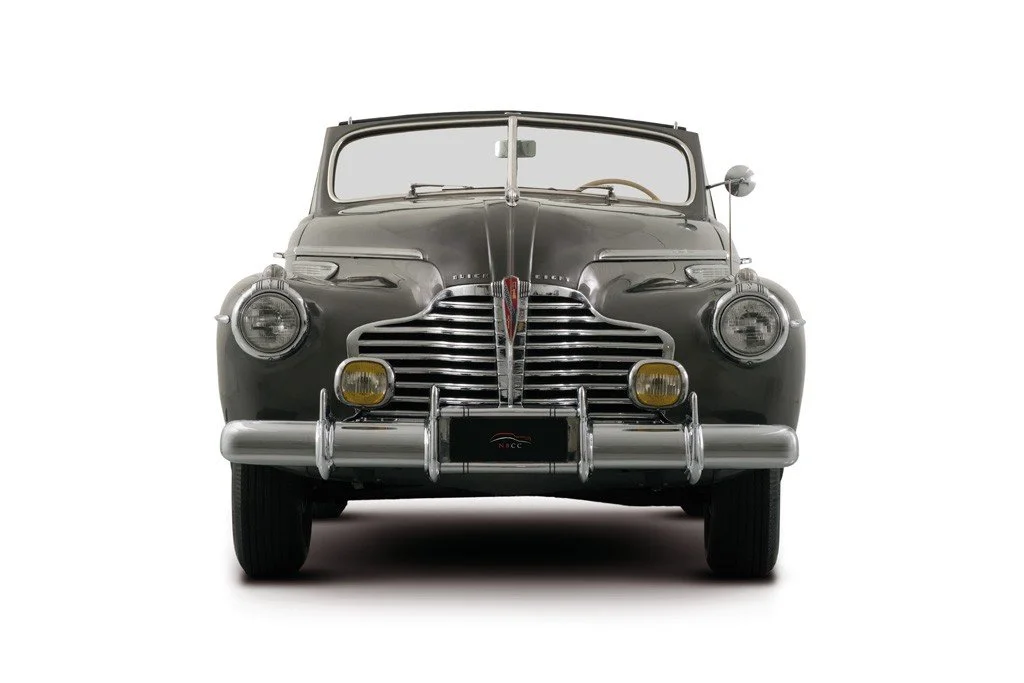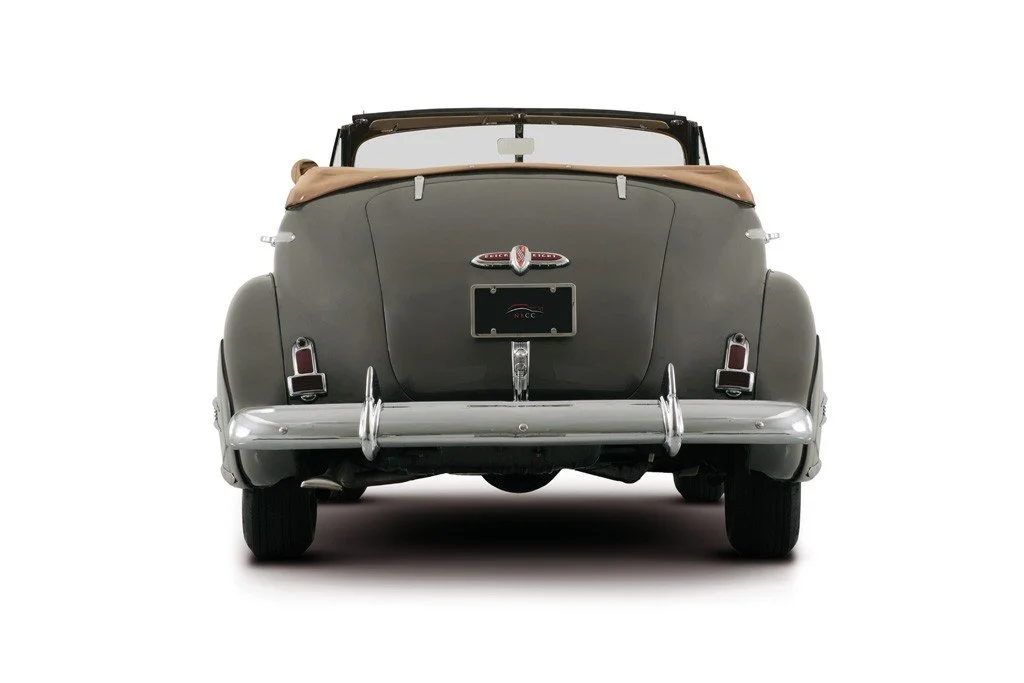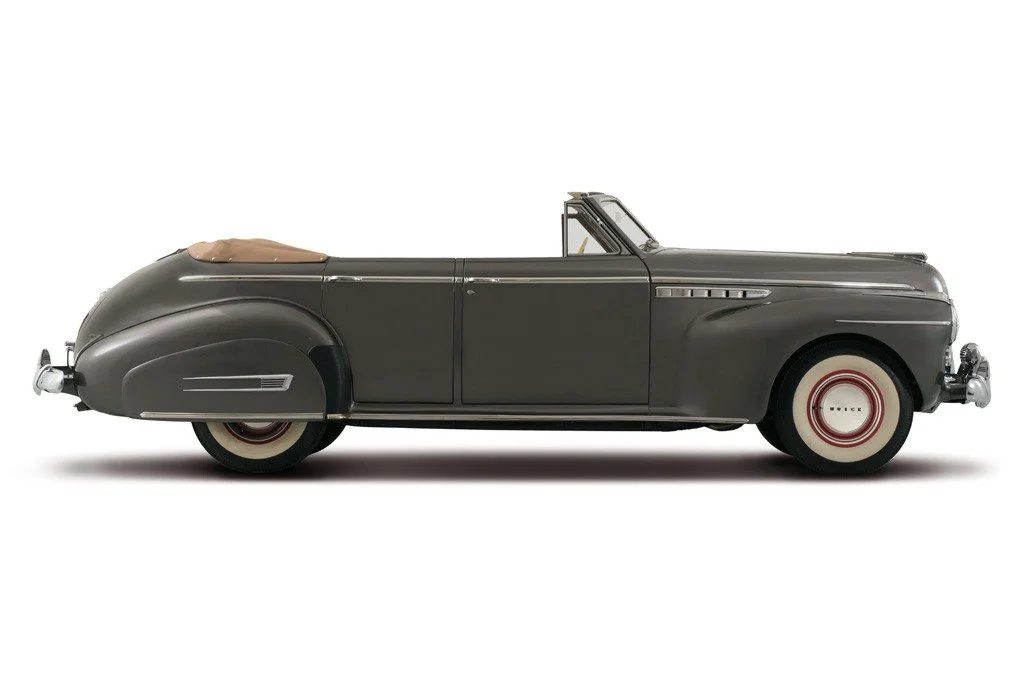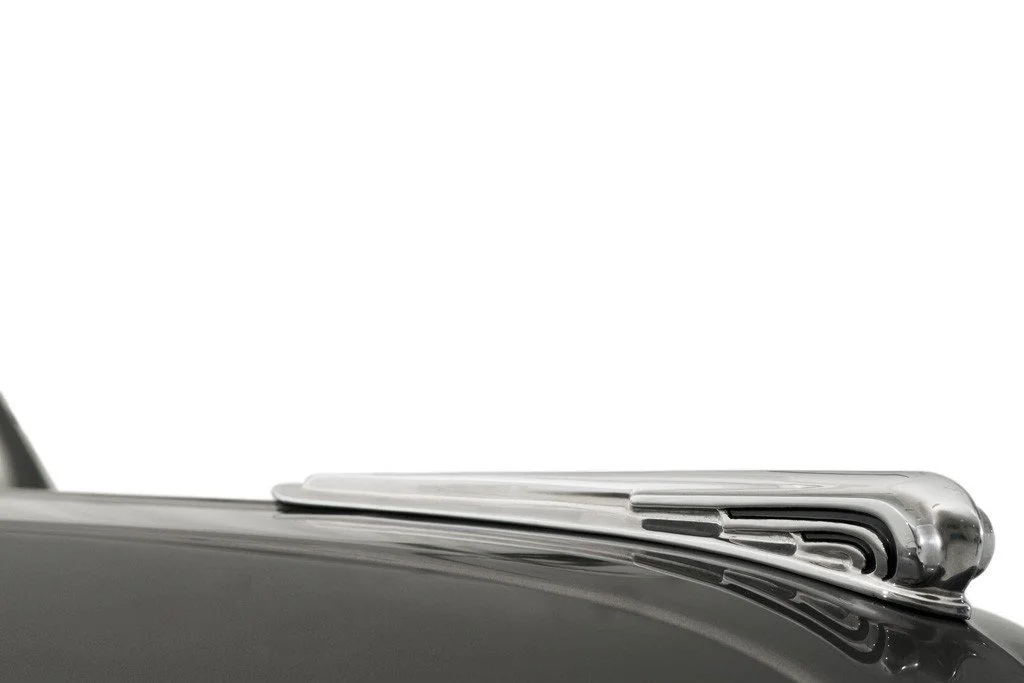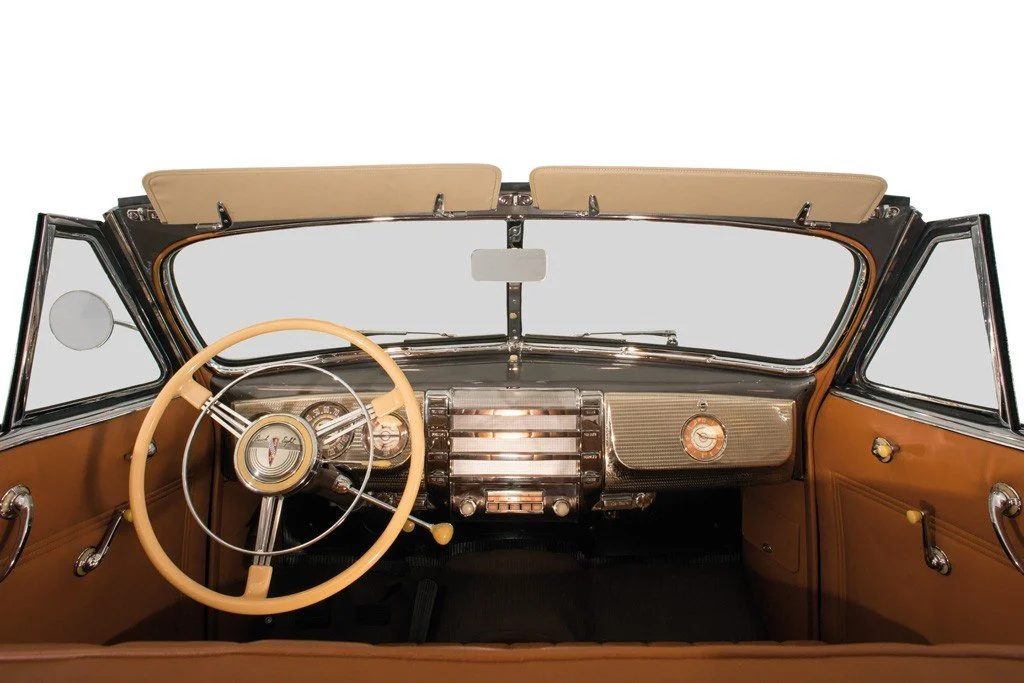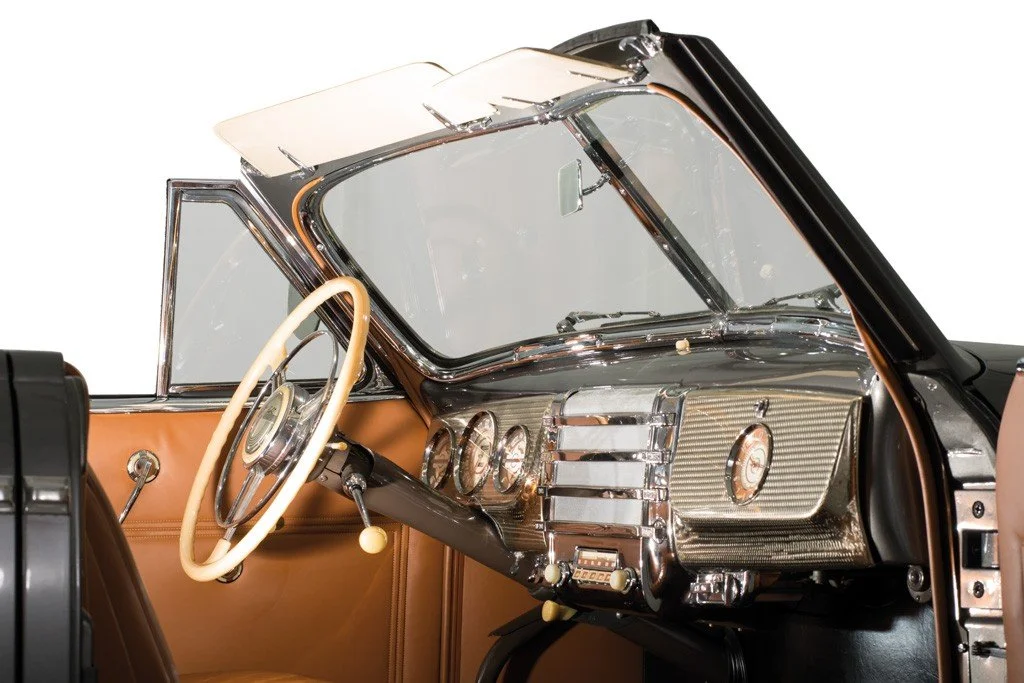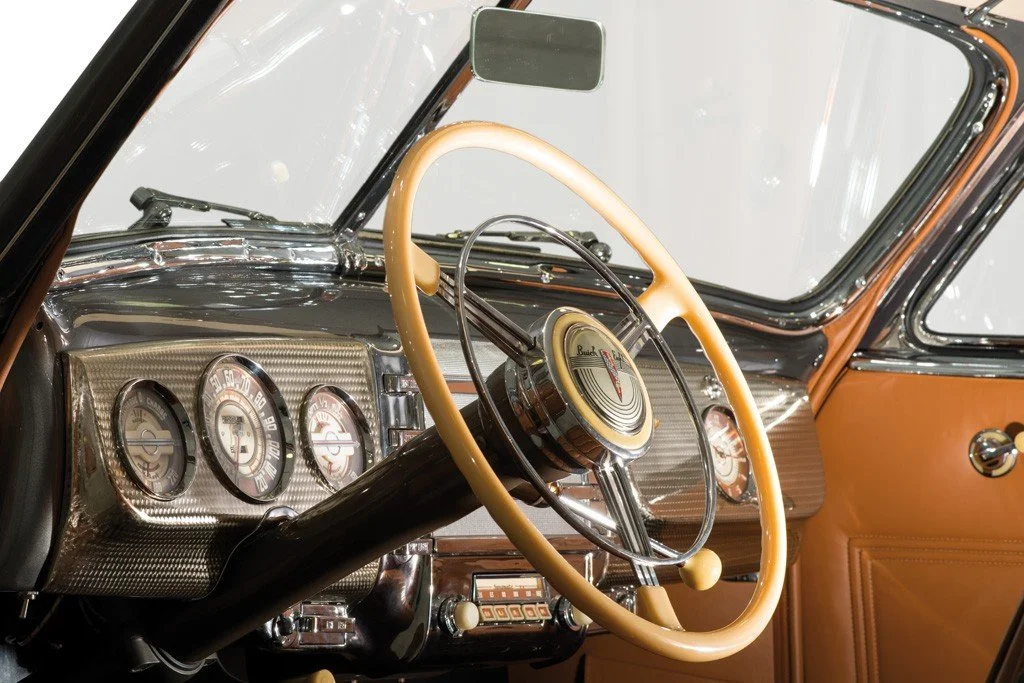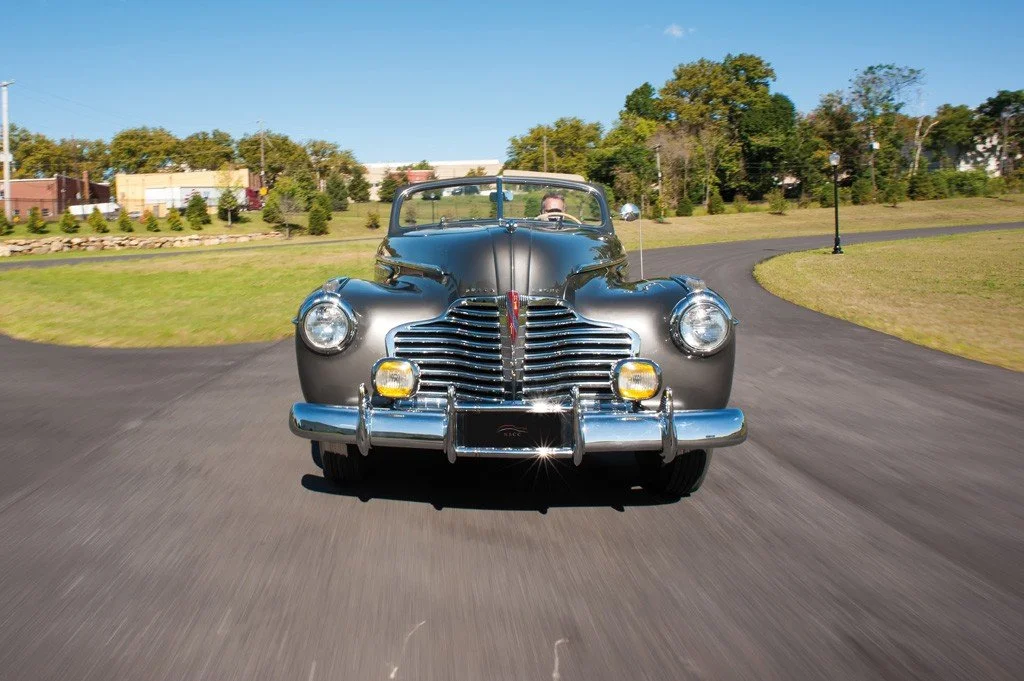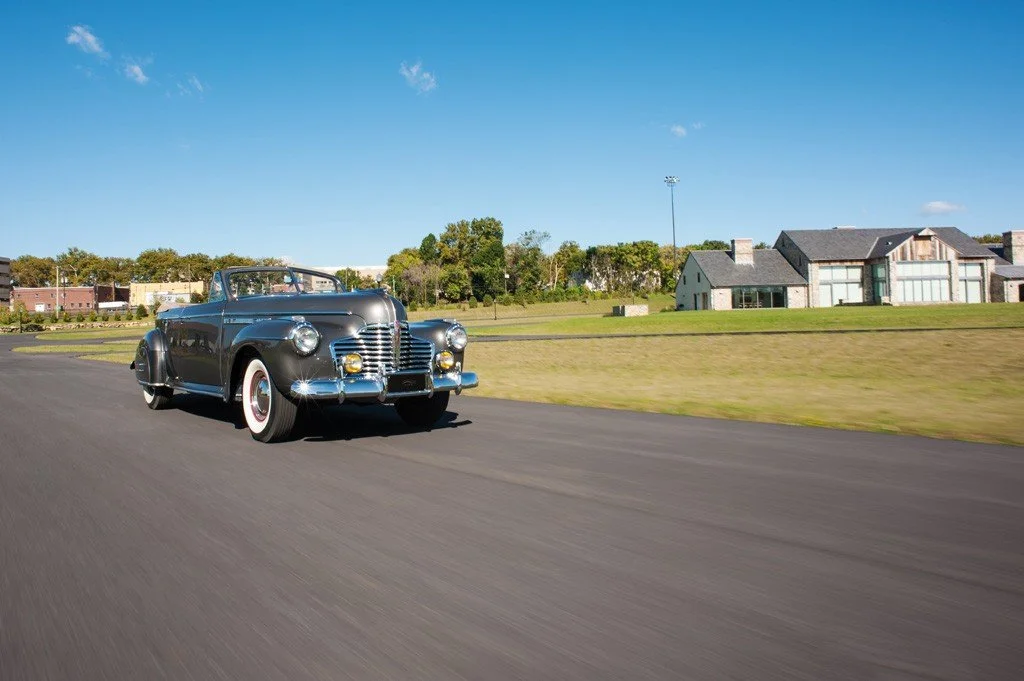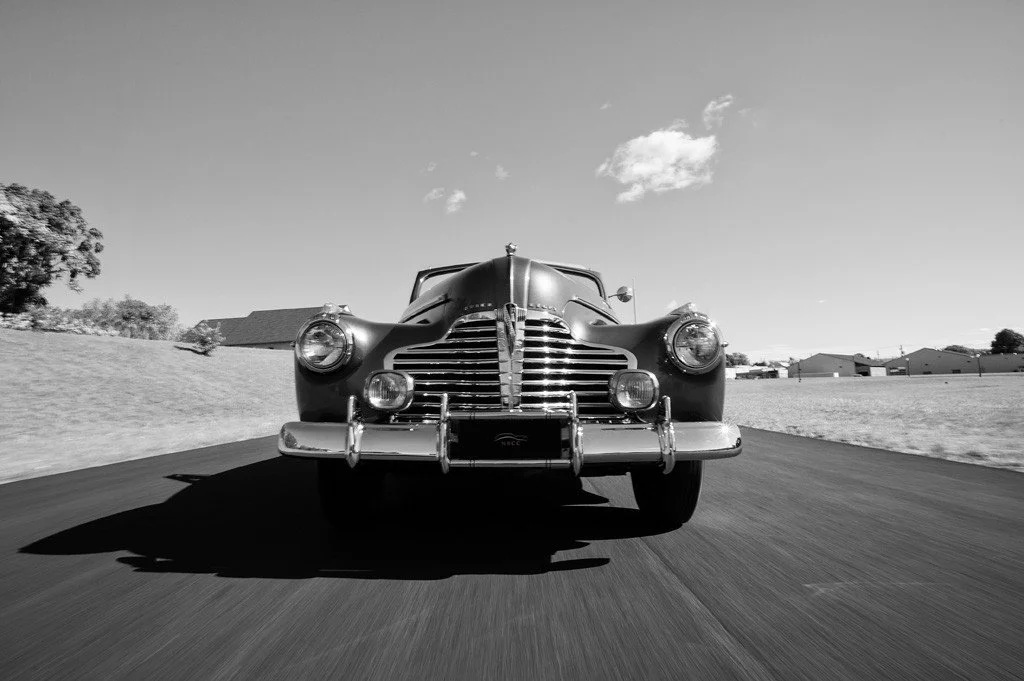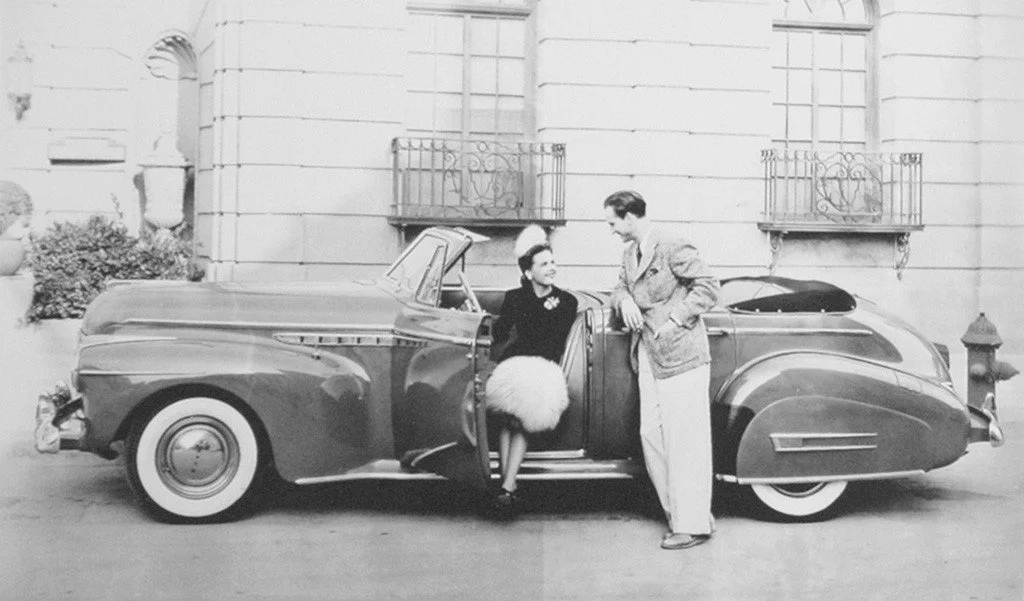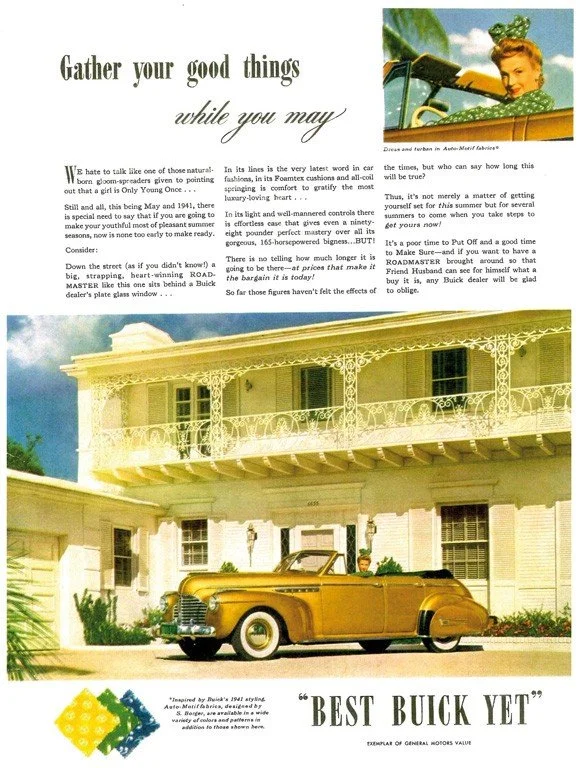-
1941 was a fortunate year for the whole American automobile industry. It would be hard to find an unattractive car in any of the Big Three marques, but also among the various independent brands. Buick in 1941 had a successful range, improved from the previous year, and showed all its splendor in the luxury Roadmaster series.
This model is a top collectors’ car for its rarity but also because, in 1941, it represented for Buick the last four-door convertible named Phaeton (Series 70 – Model 71C). This excellent specimen, in a sober and elegant Lancaster Gray color with top in Tan canvas and interior in Tan leather, was subjected to a radical and professional restoration started towards the end of 1993 and completed in July 1996, with the utmost respect for the original model. The car joined the Nicola Bulgari Car Collection in 2005 and is one of only 17 units, out of the 326 built, believed to still be in existence. -
Company
General MotorsWheelbase
126inInterior trim
Tan leatherBrakes
front and rear drumsMake
BuickLength
215.4inEngine
inline 8 - 320.2cidTires
7.00x15Model
Roadmaster Convertible Phaeton - Model 71CWidth
78.5inCarburetor
2 carb. Stromberg 2-barrelOriginal Price
$1,775Body style
4-door Convertible SedanWeight
4245lbsHorsepower
165hp @ 3800rpmProduction
326Model year
1941Exterior paint
Lancaster Grey/Tan topTransmission
3-speed manual -
The 1940 car was the most successful model in Buick's history, but they had every intention of doing even better in 1941. And with the modern looking car they produced in '41, they did just that. A car with a fresh design and improvements inside, outside and under the hood, it was the best Buick yet.
The Buicks for 1941 were more concerted than ever before. For the first time, the front bumper license plate bracket was an integral part of the bumper; the front fenders extended back to the front doors and rocker panels. The rear directional signal indicators were now carried in a horizontal position just below the tail lamps with an arrow indicating turn directions. All signals on the car turned off automatically.
Inside, the car featured for the first time damascene finished dash panels and glove compartment doors and instruments with a new brushed copper and cream combination. Also new, and an improvement for driver comfort, was the radio grille casting, which was one large piece mounted with four large shoulder studs and carried all the switches, ashtray, and air control knobs for the defroster for easy access to these controls.
The standard hood was replaced with a one-piece stamping held in place with a new type of hood latch. To open the hood from either side, the latch was pulled out and the safety button released. By simply releasing both latches at the same time, the entire hood assembly could be removed from the car without loosening a bolt.
Buick had five different models for the 1941 model year, with one of the most prestigious being the mighty Roadmaster on its 126-inch-wheelbase chassis with the large overhead-valve inline eight-cylinder engine. Among the most elegant body styles was the four-door convertible phaeton, which would be the last convertible sedan offered on a production Buick chassis.
Out of the total 1941 Buick production, which exceeded 377,000 units, only about 15,300 were Roadmasters and just 312 specimens of the handsome and distinctive Convertible Phaeton were produced. Only about 17 of those are known to survive today.
The 1941 Buick line included several important performance enhancements, thanks to Charles Chayne and his engineering department. There was “Compound Carburetion” which utilized two two-barrel carburetors that were mounted in tandem and connected by a progressive linkage. This allowed the forward carburetor to operate full-time, while the rear carburetor operated only under hard acceleration. Compression was raised to 7.0:1 and higher piston crowns fitted, bringing the 320 cubic-inch valve-in-head engine to nearly 165 horsepower and 278 pound-feet of torque. With five more horsepower than a senior Packard, 15 more than any Cadillac, and 25 more than the largest Chryslers, it was the most powerful engine available that year on an American car. To add to the excitement, Buick owners could choose the rear axle ratios, catering to their specific need, and at no additional charge.


